Last month was #NoMowMay and we loved seeing your lawns growing tall, filling with colour and supporting insects. In spring, bluebells nod gracefully, buttercups sunbathe with upturned petals and daisies nestle in grassy verges. Wherever you go, it is likely that spring wildflowers are waiting in the wings to greet you in their full, colourful glory. Read on to discover some of our floral favourites popping up this season, and how to identify them.
Wildflower watch
Chris Lawrence
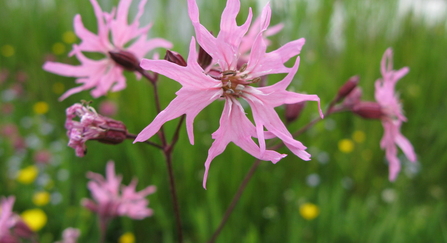
Lee Schofield
Ragged robin
A favourite amongst bumblebees, honeybees and butterflies, the ragged robin has delicate pink flowers and narrow, grass-like leaves. It can be found in any wildflower meadow, damp pasture or woodland ride.
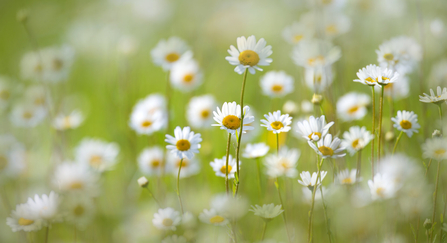
Jon Hawkins - Surrey Hills Photography
Daisy
Heralding the arrival of spring, daisies grow far and wide, offering up their blooms for the creation of necklaces (daisy chains) and ‘love me, love me not’ debates. This white-and-yellow flower has spoon-shaped leaves that form a rosette at the base of the plant. Little daisies lying low in short grasses are known as field daisies, whereas tall towering daisies are known as oxeye daisies.
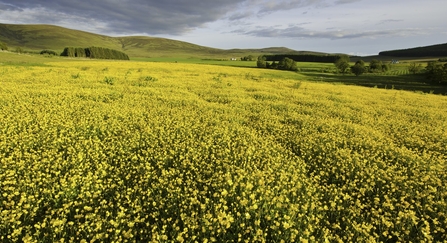
Creeping buttercup (Ranunclus repens) - Mark Hamblin/2020VISION
Buttercup
Though there are various types of buttercups, our most familiar is the creeping buttercup found in damp places on grassland, woodland and field edges. It also appears in parks and gardens and is a childhood favourite: if a yellow reflection appears when it is held up to the chin, it is considered a sign that the person likes butter. Creeping buttercups have yellow flowers about 2cm across and hairy leaves divided into three lobes with frayed edges.
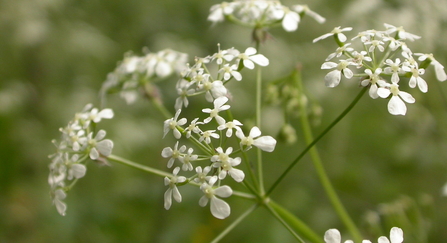
Philip Precey
Cow parsley
Huddled together in umbrella-like clusters, cow parsley grows rapidly and prefers shadier habitats, lining woodland edges and hedgerows with their frothy, white flowers and large, fern-like leaves. A favourite flower of butterflies, especially orange-tips.
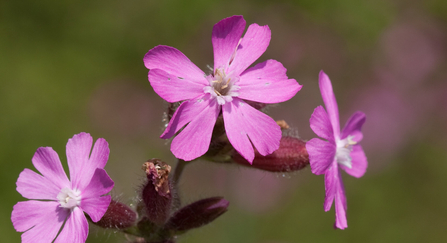
Vaughn Matthews
Red campion
Following in the footsteps of the graceful bluebell, red campion will flower to brighten woodlands and roadsides with their rose-red blooms. Red campion has five petals, each deeply notched and divided in two, with hairy leaves and stems. If growing alongside white campion, the two may hybridise to produce pink or white blooms.
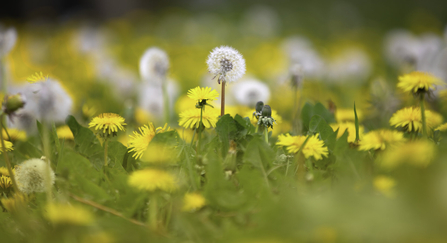
Jon Hawkins – Surrey Hills Photography
Dandelions
Despite many people seeing these as weeds, they are an essential source of food for pollinators. These familiar yellow flower heads grow anywhere from gardens to roadsides, pastures to meadows. The leaves of the common dandelion are lobed and spoon-shaped. When it fruits, the seeds appear to form a globular, fluffy head.
Capture your wildflowers
If you see any wildflowers when you are out and about, don't forget to take a photo of them and take part in The Essex BioBlitz! By snapping your wildflower photos, you are providing valuable data for the University of Essex. These will help inform how climate change is affecting our county. It couldn't be easier to take part.

